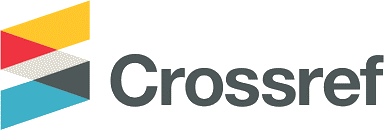Journal of Materials Exploration and Findings
Abstract
The primary objective of deploying Pressure Relief Device (PRD) equipment is to ensure the safety of pressure vessels within a pressurized system. Over time, PRD equipment may degrade and fail to perform its intended function, which must be identified as a failure mode. To mitigate potential risks associated with this, it is recommended that an approach such as risk-based inspection (RBI) be implemented. Despite the widespread adoption of RBI, the method relies on qualitative techniques, leading to significant variations in equipment risk assessments. This study proposes a novel risk analysis method that uses deep learning-based machine learning to develop a risk assessment model for PRD equipment related to the fail-on-leakage failure mode. This innovative approach will reduce assessment times, improve accuracy, and lower processing costs by providing precise calculation results. The research develops a risk prediction program that uses deep learning-based machine learning designed explicitly for failure-on-leakage failure mode in pressure relief equipment. The dataset used in the model development process adheres to API 581 standards and comprises 168 data points. Various model parameters are employed, including a test size of 20%, a random state value of 0, 150 epochs, a learning rate of 0.001, and 3 layers with dense values of 128, 64, and 32. The model's performance is evaluated using a validation confusion matrix, which indicates an accuracy of 94%.
References
Alzubaidi, L, Zhang, J, Humaidi, A J, Al-Dujaili, A, Duan, Y, Al-Shamma, O, Santamaría, J, Fadhel, M A, Al-Amidie, M & Farhan, L 2021, ’Review of deep learning: concepts, CNN architectures, challenges, applications, future directions’, Journal of Big Data, 8(1), pp.53.
American Petroleum Institute 2016, API RP 581: Risk-Based Inspection Methodology (Third Edition). API Publishing Service.
Cao, J, Zhang, J, Yu, X & Tu, S T 2021, ‘Detection of pressure relief valve leakage by tuning generated sound characteristics,’ Process Safety and Environmental Protection, 148, pp.664–675.
Chien, C H, Chen, C H & Chao, Y J 2009, ‘A strategy for the risk-based inspection of pressure safety valves,’ Reliability Engineering & System Safety, 94(4), pp.810–818.
Coker, A K 2007, ‘Process Safety and Pressure-Relieving Devices,’ In Ludwig’s Applied Process Design for Chemical and Petrochemical Plants, pp.575–770.
Digita, F R, Fatriansyah, J F, Ridzuan, A R, Ovelia, H, Mas' ud, I A, Tihara, I H & Linuwih, B D P 2023, ‘Pipeline Risk Analysis Optimization with Monte Carlo Method Using Gamma Distribution’, Journal of Materials Exploration and Findings, 2(3), pp.140-149.
Fatriansyah, J F, Surip, S N & Hartoyo, F 2022, ‘Mechanical property prediction of poly (lactic acid) blends using deep neural network’, Evergreen, 9(1), pp.141-144.
Geary, W 2002, Risk based inspection: a case study evaluation of offshore process plant, Health and Safety Laboratory: Sheffield, UK.
Hartoyo, F, Irianti, G P, Fatriansyah, J F, Ovelia, H, Mas' ud, I A, Digita, F R, Fauzi, A & Anis, M 2023, ‘Weibull distribution optimization for piping risk calculation due to uniform corrosion using Monte Carlo method’, Materials Today: Proceedings, 80, pp.1650-1655.
Hu, X, Wen, S & Lam, H K 2022, ‘Dynamic random distribution learning rate for neural networks training,’ Applied Soft Computing, 124, pp.109058.
Irianti, G P 2021, Perancangan Program Pengestimasi Risiko Kegagalan Tangki Timbun Akibat Korosi Seragam Berbasis Deep Neural Network. Universitas Indonesia.
Lim, J, Jeong, S, Lim, S, Cho, H, Shim, J Y, Hong, S I, Kwon, S C, Lee, H, Moon, I & Kim, J 2022, ‘Development of Dye Exhaustion Behavior Prediction Model using Deep Neural Network,’ Computer Aided Chemical Engineering, 49, pp.1825–1830.
Mitchell, E M, Gross, R E & Harris, S P 2013, ‘Evaluating Risk and Safety Integrity Levels for Pressure Relief Valves Through Probabilistic Modeling,’ Journal of Pressure Vessel Technology, 135(2).
Moganam, P K & Sathia Seelan, D A 2022, ‘Deep learning and machine learning neural network approaches for multi class leather texture defect classification and segmentation,’ Journal of Leather Science and Engineering, 4(1), pp.7.
Mohsin, M & Jamaani, F 2023, ‘A novel deep-learning technique for forecasting oil price volatility using historical prices of five precious metals in context of green financing – A comparison of deep learning, machine learning, and statistical models,’ Resources Policy, 86, pp.104216.
Nakamoto, P 2018, Neural Networks and Deep Learning: Neural Networks and Deep Learning, Deep Learning Explained to Your Granny. CreateSpace Independent Publishing Platform.
Nguyen, L C & Nguyen-Xuan, H 2020, ‘Deep learning for computational structural optimization,’ ISA Transactions, 103, pp.177–191.
Osipyan, H, Edwards, B I & Cheok, A D 2022, Deep Neural Network Applications. CRC Press.
Rachman, A & Ratnayake, R M C 2019, ‘Machine learning approach for risk-based inspection screening assessment,’ Reliability Engineering & System Safety, 185, pp.518–532.
Raschka, S 2015, Python Machine Learning. Packt Publishing.
Rosmariana, M 2023, Perancangan Program Estimasi Risiko Kegagalan Pada Peralatan Perangkat Pelepas Tekanan Akibat Fail on Demand Berbasis Pembelajaran Mesin Dengan Metode Artificial Neural Network. Universitas Indonesia.
SKK MIGAS 2023, Laporan tahunan SKK Migas tahunan 2022 Transpormasi Hulu Migas Untuk Meningkatkan Aktivitas dan Investasi.
Smith, P & Zappe, R W 2004, ’Pressure Relief Valves,’ In Valve Selection Handbook, pp. 169–225.
Recommended Citation
Wijayanto, Adi Yudho; Andreano, Yossi; Rizky, M. Ali Yafi; and Priadi, Dedi
(2024)
"Implementation of Machine Learning Using Deep Neural Networks to Estimate the Failure Risk Caused by Leakage in Pressure Relief Devices,"
Journal of Materials Exploration and Findings: Vol. 3:
Iss.
2, Article 9.
DOI: 10.7454/jmef.v3i2.1066
Available at:
https://scholarhub.ui.ac.id/jmef/vol3/iss2/9
Included in
Computational Engineering Commons, Other Engineering Commons, Other Materials Science and Engineering Commons, Risk Analysis Commons










